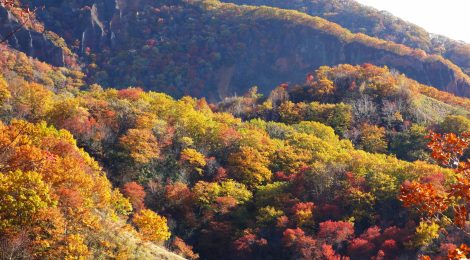
Noboribetsu Primeval Forest
Forests in japan: Exploring the Beauty of Nature
Introduction
Japan, known for its rich cultural heritage and technological advancements, is also home to breathtaking natural landscapes. One of the most captivating aspects of Japan’s natural beauty is its forests. With an abundance of lush greenery, diverse flora and fauna, and serene surroundings, Japanese forests offer a tranquil escape from the hustle and bustle of urban life.
In this article, we will delve into the enchanting world of Japanese forests, exploring their significance, unique features, and the various activities one can indulge in while visiting these natural wonders.
Heading 2: Nature’s Treasures
Japan’s forests are a treasure trove of natural wonders. From towering trees to vibrant flowers, the flora found in these forests is both diverse and awe-inspiring. One such example is the cherry blossom tree, which holds great cultural significance in Japan. Every spring, these delicate pink flowers paint the landscapes in a breathtaking display of beauty and renewal.
Heading 3: The Serenity of Forests
One of the most remarkable aspects of Japanese forests is the sense of tranquility they offer. As you step into these serene environments, you can’t help but feel a deep connection with nature. The gentle rustling of leaves, the chirping of birds, and the soothing sound of flowing rivers create a peaceful ambiance that rejuvenates the soul. It’s no wonder that many people seek solace in these enchanting forests, using them as a means to escape the stresses of daily life.
Heading 3: Forest Bathing – A Therapeutic Experience
In recent years, the practice of “forest bathing” has gained popularity in Japan and around the world. Forest bathing, or Shinrin-yoku, involves immersing oneself in the forest environment to reap its therapeutic benefits. The concept is rooted in the belief that spending time in nature can improve physical and mental well-being. Numerous studies have shown that forest bathing can reduce stress levels, lower blood pressure, and boost the immune system. So, the next time you visit a Japanese forest, consider taking a leisurely stroll and allowing nature to heal and rejuvenate your mind and body.
Heading 2: Exploring Japanese Forests
Japan is home to a diverse range of forests, each with its own unique features and attractions. Let’s explore some of the most popular ones:
Heading 3: Yakushima Forest
Located in Kagoshima Prefecture, Yakushima Forest is a UNESCO World Heritage site known for its ancient cedar trees, some of which are over 1,000 years old. The dense foliage and moss-covered forest floor create a mystical atmosphere that transports visitors to a different era. Hiking trails allow visitors to explore this natural wonderland, with highlights including the famous Jomon Sugi, a massive cedar tree estimated to be around 2,700 years old.
Heading 3: Shirakami Sanchi Forest
Stretching across the borders of Aomori and Akita Prefectures, the Shirakami Sanchi Forest is another UNESCO World Heritage site. This primeval beech forest is a living testament to Japan’s untouched natural beauty. The forest is home to various species of flora and fauna, including the elusive black bear and the Japanese serow. Hiking trails and guided tours allow visitors to immerse themselves in the unspoiled wilderness and witness the forest’s magnificent beauty up close.
Heading 3: Arashiyama Bamboo Grove
While not a traditional forest, the Arashiyama Bamboo Grove in Kyoto is a must-visit for nature enthusiasts. The towering bamboo stalks create a surreal atmosphere, with sunlight filtering through the dense canopy above. Walking through this bamboo paradise is a truly magical experience, and it’s no wonder that it has become a popular destination for photographers and tourists alike.
Heading 2: Conservation Efforts
Preserving Japan’s forests is of utmost importance to ensure their longevity and continued beauty. The Japanese government, along with various organizations and local communities, has implemented several conservation efforts to protect these natural habitats.
Heading 3: Sustainable Forest Management
Sustainable forest management practices are crucial to maintaining the delicate balance of Japan’s forests. This includes responsible logging, reforestation initiatives, and the implementation of strict regulations to prevent illegal logging. By adopting sustainable practices, Japan aims to safeguard its forests for future generations to enjoy.
Heading 3: National Parks and Reserves
Japan has established numerous national parks and nature reserves to protect its forests and other natural landscapes. These protected areas not only preserve the flora and fauna but also provide opportunities for visitors to appreciate and learn about Japan’s natural heritage. National parks such as Nikko National Park and Towada-Hachimantai National Park offer breathtaking views, hiking trails, and educational programs to promote conservation and environmental awareness.
Heading 2: Conclusion
Japanese forests are a testament to the beauty and power of nature. With their serene surroundings, diverse flora and fauna, and therapeutic qualities, these forests offer a unique experience that is both calming and awe-inspiring. Whether you choose to embark on a forest bathing journey, explore ancient cedar forests, or marvel at the towering bamboo groves, Japan’s forests have something to offer everyone.
As we continue to appreciate and protect these natural wonders, let us remember the importance of preserving our forests for future generations. By promoting sustainable practices and supporting conservation efforts, we can ensure that Japan’s forests remain a source of inspiration and solace for years to come.
So, the next time you find yourself in Japan, don’t miss the opportunity to immerse yourself in the enchanting world of Japanese forests. Explore, breathe, and connect with nature in this serene and captivating environment.
Address And Maps Location:
Noboribetsuonsen-cho, Noboribetsu-shi, Hokkaido
Subscribe, follow @idbcpr and idbackpacker.com